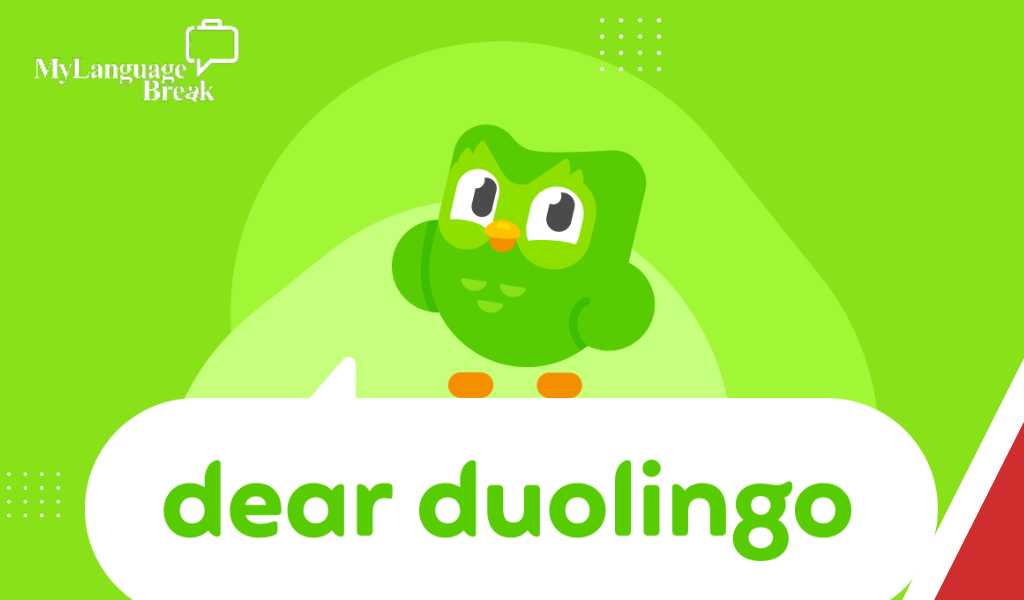Discover the exciting world of learning Tagalog with Duolingo in 2023! As Tagalog finds its place among Duolingo’s language repertoire, you can embark on a journey to master this beautiful language. Dive into our detailed guide, exploring everything from the inception of Tagalog on Duolingo in 2022 to its enhanced presence in 2023.
Whether you’re a beginner or aiming for advanced fluency, Duolingo offers an array of resources to cater to your needs. Our comprehensive approach covers pronunciation, and vocabulary building, and delves into the nuances of Tagalog and Filipino. While Duolingo remains a popular choice, we also unveil alternative apps and methods to supplement your learning journey. Join us in unraveling the world of Tagalog through Duolingo, making language acquisition an exciting and fulfilling endeavor.
Currently, Duolingo doesn’t offer a Tagalog language course, leaving many aspiring learners seeking alternatives. Despite being based on the Latin alphabet, Tagalog is not available on Duolingo’s language roster as of 2023. This has prompted individuals to explore other platforms for learning Tagalog. The absence of Tagalog on Duolingo has led to the emergence of alternative language learning apps, some of which are highly regarded by users. These alternatives cater to individuals eager to learn Tagalog and provide interactive lessons, vocabulary building, and practical exercises.
While Duolingo remains a prominent language learning app, it’s essential to consider other options to fulfill your Tagalog language learning goals. Alternatives like Ling App and various apps offer effective ways to acquire Tagalog skills. Ling App, for instance, empowers learners with comprehensive lessons and engaging exercises, contributing to a well-rounded language learning experience.
As of 2023, Duolingo does not feature Tagalog among its language courses. However, this gap in Duolingo’s offerings has sparked the development of alternative platforms that cater to Tagalog language learners. Exploring these alternatives can be a productive way to embark on your journey to master the Tagalog language.

Alternatives to Duolingo: Exploring Other Avenues
Exploring alternative avenues for language learning becomes essential when Duolingo doesn’t offer a specific course, such as Tagalog. While Duolingo remains a popular choice, the absence of Tagalog on its platform has spurred the development of alternative apps that cater to Tagalog learners.
Notably, the Ling App offers a viable alternative for learning Tagalog. With engaging lessons, interactive exercises, and the ability to learn at your own pace, Ling App presents an effective way to acquire Tagalog skills.
Moreover, there are other great apps to learn Tagalog, providing learners with diverse options to choose from. These alternatives often offer unique teaching methods, customizable learning experiences, and a focus on practical language skills.
In summary, the absence of Tagalog on Duolingo has prompted the emergence of alternative language learning platforms, including Ling App and other noteworthy options. Exploring these alternatives can lead to a fulfilling language learning journey, tailored to your preferences and needs.
The Success of Duolingo’s Tagalog Course: 2022 vs 2023
The status of Duolingo’s Tagalog course has been a topic of interest, and its evolution from 2022 to 2023 is noteworthy. In September 2022, Duolingo announced the upcoming launch of its Tagalog course, generating anticipation among language learners. However, as of early 2023, the course has not been released yet, raising questions about its availability and development progress.
Despite Duolingo’s delay in offering a Tagalog course, learners have not been left without options. As suggested, there are alternative apps available to learn Tagalog effectively. These alternatives offer engaging methods and lessons, providing learners with a chance to acquire Tagalog skills.
Furthermore, as indicated, the Ling App is a prominent alternative that focuses on teaching Tagalog, presenting a valuable option for language enthusiasts. This suggests that while Duolingo’s Tagalog course may not have materialized as expected, learners have other avenues to pursue their language learning goals.
In summary, while Duolingo’s Tagalog course has not materialized as initially anticipated, the availability of alternative language learning apps, such as Ling App, ensures that learners can still embark on their journey to learn Tagalog effectively.
Mastering Tagalog Pronunciation and Vocabulary
Mastering Tagalog pronunciation and vocabulary requires effective tools and techniques. While Duolingo has not introduced a Tagalog course yet, other apps can help. The Ling App offers alternatives to Duolingo for learning Tagalog, providing focused lessons on pronunciation and vocabulary.
Furthermore, other language-learning apps like Drops, Tandem, and Clozemaster have been recommended for learning Tagalog quickly. These apps offer interactive learning experiences, helping learners grasp pronunciation nuances and expand their vocabulary.
Engaging with native speakers through Tandem can also improve your pronunciation and vocabulary. Additionally, exploring Tagalog podcasts, videos, and resources can enhance your language journey.
In summary, while Duolingo might not offer a Tagalog course, Ling App and other resources like Drops, Tandem, and Clozemaster are excellent alternatives to mastering Tagalog pronunciation and vocabulary.
Tagalog Language Learning Beyond Basics
Taking your Tagalog language skills beyond the basics involves exploring alternative resources since Duolingo doesn’t offer a Tagalog course yet. You can utilize the Ling App, an alternative with a focus on Tagalog learning. Additionally, you might find the “Learn Tagalog Language & Vocab” app on the App Store beneficial for advancing your Tagalog vocabulary.
Exploring Tagalog podcasts, videos, and literature, as well as engaging in conversations with native speakers, can enhance your language proficiency. Language exchange platforms, online communities, and local meetups can provide opportunities for practice Language learning is an ongoing journey, and immersing yourself in Tagalog content and real-life interactions will help you progress beyond the basics.
Tagalog vs. Filipino: Navigating Language Nuances
Tagalog and Filipino are closely related languages, but they have distinct differences. Tagalog refers to the language spoken primarily in the Philippines, particularly in the Luzon region, and serves as the basis for the national language, Filipino. While they share a significant amount of vocabulary and grammar, they also have nuanced distinctions.
Filipino is the official national language of the Philippines and is based on Tagalog. It incorporates vocabulary from various Philippine languages and English, making it more inclusive and representative of the country’s linguistic diversity. Tagalog is one of the languages that contribute to the vocabulary of Filipino.
In everyday conversation, the terms “Tagalog” and “Filipino” are often used interchangeably. However, “Filipino” is more commonly used in formal contexts, education, and media. Both languages are used in written and spoken forms throughout the Philippines.
In summary, Tagalog is a specific language that is a component of the broader Filipino language. While closely related, Filipino encompasses a wider range of linguistic influences, reflecting the cultural and linguistic diversity of the Philippines.
Learning Strategies for English Speakers
Learning Tagalog as an English speaker requires effective strategies to navigate its unique challenges. While Duolingo does not offer Tagalog as of now, other alternatives can help you master the language:
- Alternative Language Apps: Apps like Ling and Drops offer engaging lessons for learning Tagalog, focusing on vocabulary, phrases, and pronunciation.
- Resourceful Websites: Websites like “Happily Ever Travels” provide insights into Tagalog learning resources, including free options and helpful tips.
- Practice with Native Speakers: Engage in language exchange or conversation with native Tagalog speakers to improve speaking and comprehension skills.
- Utilize Language Books: Invest in Tagalog language books and workbooks designed for beginners, which provide structured learning content.
- Online Communities: Join language learning forums, social media groups, or subreddits dedicated to learning Tagalog. These platforms offer peer support and language exchange opportunities.
- Filipino Cultural Exposure: Immerse yourself in Filipino movies, music, and TV shows to become familiar with the language’s context and culture.
- Language Tutors: Consider hiring a Tagalog tutor for personalized lessons and guidance.
- Language Exchange Partners: Connect with Filipino speakers who want to learn English. This provides a chance to practice speaking both languages.
- Basic Tagalog Phrases: Start by learning basic greetings, common phrases, and numbers. Building a foundation of everyday vocabulary is essential.
- Consistent Practice: Dedicate a few minutes daily to learning and practicing Tagalog. Consistency is key to language acquisition.
- Flashcards and Memory Aids: Use flashcards to reinforce vocabulary and employ memory aids to remember complex words and phrases.
- Cultural Understanding: Learn about Filipino customs and traditions, which can enhance your language learning experience.
Remember that learning a language takes time and patience. Tailor your strategy to your learning style and goals, and enjoy the journey of discovering a new language and culture.
Duolingo’s Tagalog Fluency: A Reality Check
While Duolingo is a popular platform for learning various languages, it doesn’t currently offer a Tagalog course as of the provided information in 2023. This limitation prompts learners to explore alternative methods to achieve fluency in Tagalog.
Other language apps like Ling and Drops are excellent options for learning Tagalog. These alternatives focus on vocabulary, phrases, and interactive lessons to aid in language acquisition. Additionally, language exchange partners, online communities, and language tutors can provide valuable support and practice opportunities.
It’s important to note that achieving fluency in any language, especially one with its complexities like Tagalog, requires dedication, consistent practice, and immersion in the language’s cultural context. While Duolingo is a helpful tool for learning some languages, exploring a combination of resources and techniques tailored to Tagalog can lead to a more comprehensive and effective learning experience.

Conclusion
While Duolingo remains a popular platform for language learning, it’s important to note that as of 2023, Tagalog is not offered as a course on the platform. This absence can be disappointing for individuals interested in learning Tagalog through Duolingo. However, the platform provides a range of other languages to explore, and learners looking to master Tagalog have alternative options to consider.
Several alternative apps and resources are available for those eager to learn Tagalog. These alternatives offer tailored approaches to mastering the language, encompassing various learning styles and preferences. While Duolingo’s lack of Tagalog may be a limitation, it also highlights the diversity of language learning resources accessible to learners today.
In conclusion, while Duolingo doesn’t currently offer a Tagalog course, there are alternative language learning tools and platforms that can assist individuals in achieving their goal of learning Tagalog. As language learning technology continues to evolve, learners have the opportunity to choose from a variety of resources that align with their specific needs and preferences.
